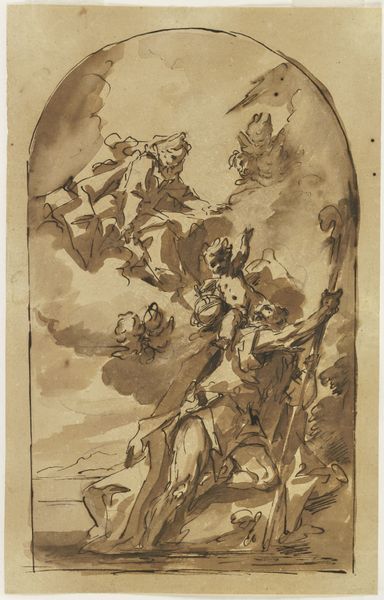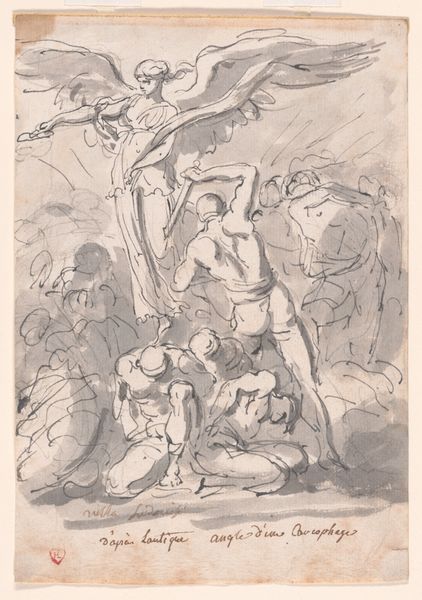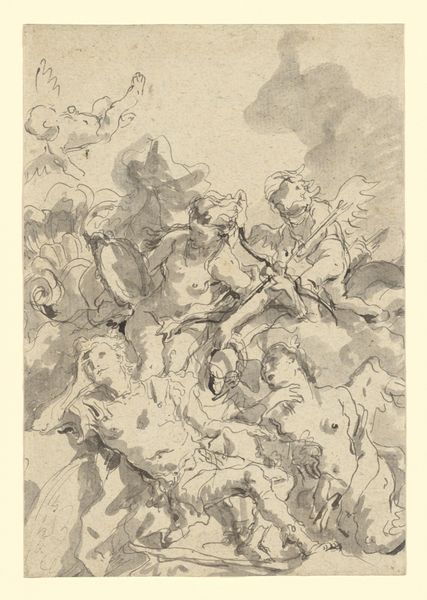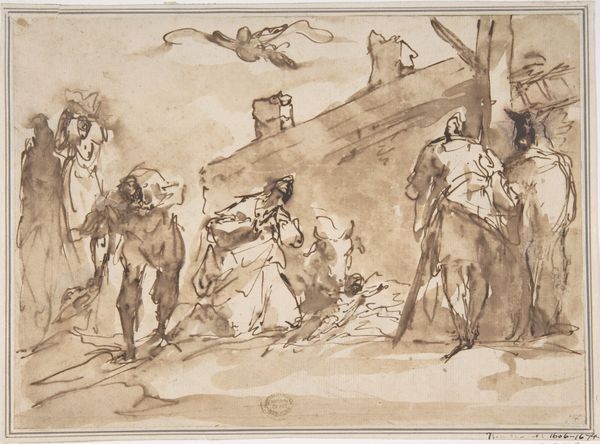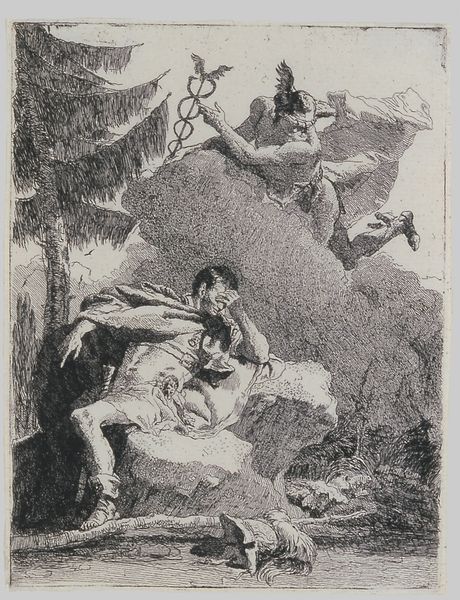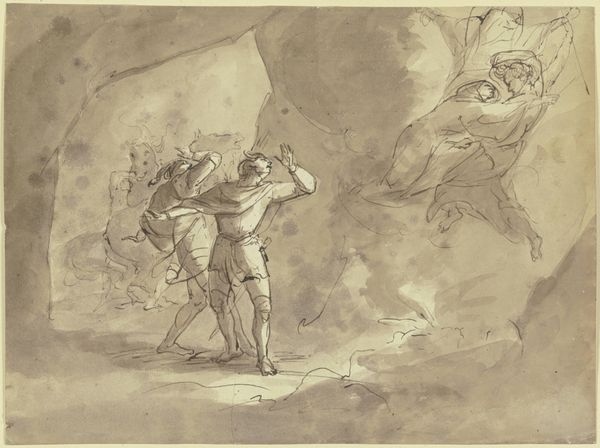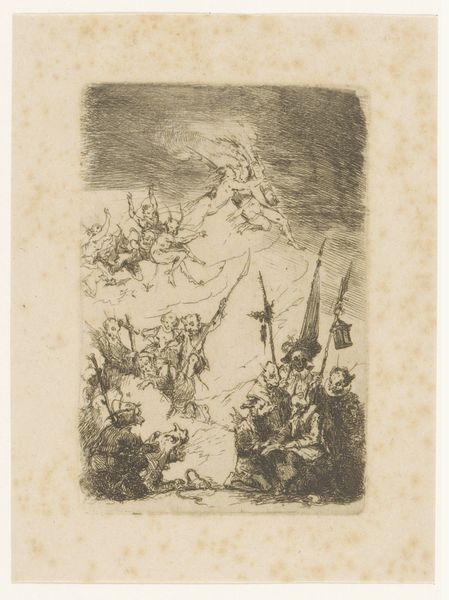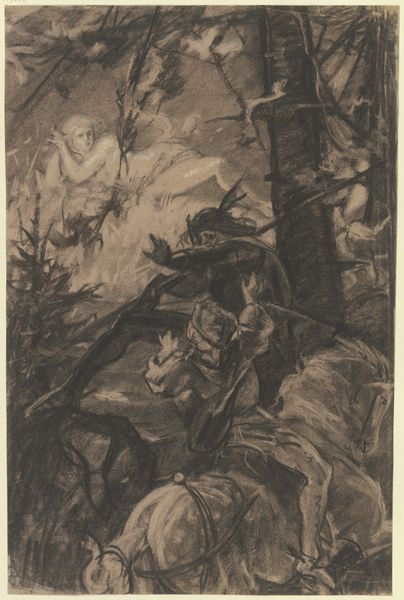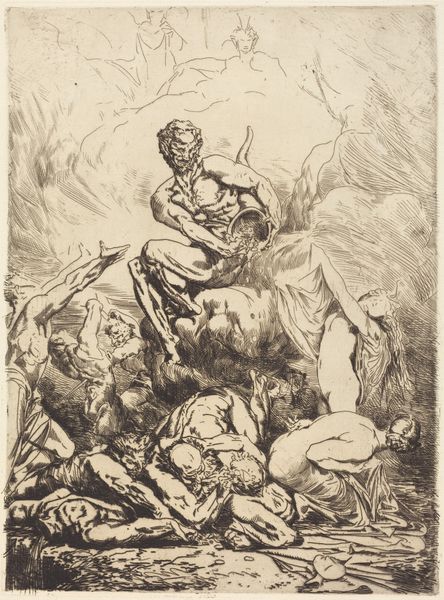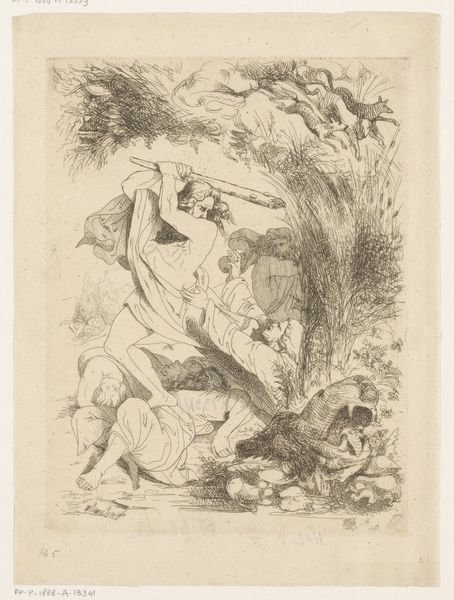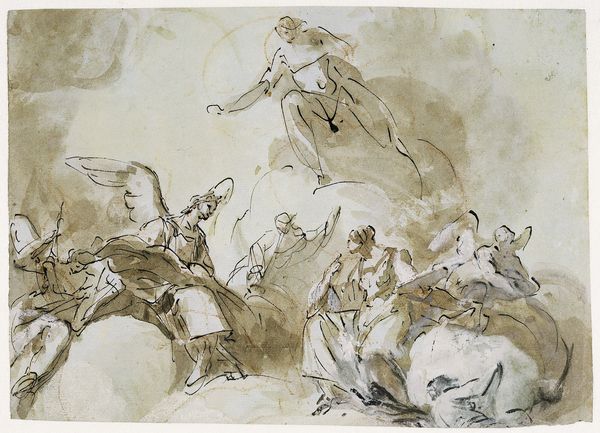
drawing, ink
#
drawing
#
narrative-art
#
figuration
#
ink
#
romanticism
#
history-painting
Copyright: Public Domain
Editor: So, this is Eugène Delacroix's "Faust and Mephistopheles on the Blocksberg," made with ink around 1826 or 1827. It’s…well, it's dark, literally and figuratively. It definitely captures a sense of impending doom. I can almost feel the madness in this frenzied scene. What do you see in this piece? Curator: Madness indeed! And superb use of ink to evoke that feeling. What strikes me is how Delacroix captures the chaotic energy of the Walpurgis Night. The swirling forms, the stark contrast, they all contribute to a sense of unease and disorientation. It’s as if we've been dropped right into the middle of Goethe’s fever dream. The silhouettes and how they're stacked are haunting, aren’t they? It feels less like illustration, more like pure emotion rendered in shades. Editor: Absolutely! It's not a straightforward illustration, but more about the mood. I’m wondering though, does this visual chaos support, or perhaps undermine, the narrative it is supposed to depict? Curator: An interesting question. It's less about a faithful record of the story, and more about embodying the *experience* of witnessing such a supernatural event, or such an altering mental state. We are pulled into their delirious moment. Delacroix wants us to *feel* the Blocksberg, not just see it. Editor: That makes so much sense. It's less of a retelling and more of a…visceral poem, capturing the essence. It is amazing that this interpretation happened nearly 200 years ago! I see the narrative of an inner journey and feeling through this artwork now. Thanks for making that connection for me. Curator: Precisely! Art’s wonderful in how it shifts and adjusts with the passing of time. Its secrets unlock with our looking and feeling too.
Comments
stadelmuseum about 2 years ago
⋮
Among the most important interpretations of Goethe's 'Faust' in the field of art are those created by the French artist Eugène Delacroix as a young man. The artist was inspired to explore the literary subject not by reading the text, which had been published in 1808, but through the experience of attending a theatrical production of the drama in London, where he had spent the summer of 1825. In 1828, when the Paris-based publisher Charles Motte published 'Faust' in the translation by Albert Stapfer, Delacroix provided the lithographs to accompany the text. Between 1825 and 1827 he had prepared a total of seventeen scenes in single studies and brush drawings.This lively brush drawing illustrates the beginning of the Walpurgis Night (line 3835ff.) within the text of 'Faust', when Faust and Mephistopheles, following the Will-o'-the-Wisp, climb the steep slopes to the Brocken and the witches' sabbath. The diagonals which determine the composition support the dramatic elements of the scene. Mephisto's impassioned gesture spurs Faust onwards and conveys the haste with which they climb through the rough territory, constantly seeking a foothold. The artist uses painterly means to underline the impression of the ghostly atmosphere. He uses the portrayal of nature - the flashes of lightning, the glow and the swirling mist mentioned in the text, as well as the gnarled roots and the fiendish creatures at their feet - to reflect the fateful mental constellation of the pair as they teeter between ascent and the threat of falling.What is unusual for a French artist of Delacroix's generation is his apparent debt to the art of Goya, especially the 'Caprichos', which had been published in 1799. This is evident in the ambivalence of concrete description and the ambiguous expression of his artistic interpretations, which reject the rigid forms of Classicism and leave room for subjective imagination.Unlike Peter Cornelius, who in his Faust cycle, published just a few years previously, had focused his attention on the moral aspects of the plot, Delacroix is interested in the psychological dimensions. His ability to execute this individual viewpoint in art explains the incomparable quality of his contribution to 'Faust', which Goethe himself recognised: "M. Delacroix (...) is a man of great talent, who found in 'Faust' his proper aliment. (...) And if I must confess that M. Delacroix has, in some scenes, surpassed my own notions, how much more will the reader find all in full life, and surpassing his imagination!" (Conversations with Eckermann, 29.11.1826)
Join the conversation
Join millions of artists and users on Artera today and experience the ultimate creative platform.
